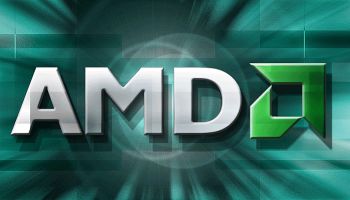AMD Posts Mixed Results Amid ‘Difficult’ Conditions

AMD has admitted to operating in a “difficult market environment” as it posted another loss
First quarter financial results from AMD did not hold many surprises and starkly illustrate the ongoing pain within the entire PC segment at present.
The chip maker reported a net loss of $146m (£95m) or $0.19 (£0.12) per share, which was better than the mammoth net loss of $590m (£384m) that AMD recorded in the same year ago period. Meanwhile revenues also fell 31 percent to $1.09bn (£709m) from $1.59bn (£1bn) a year ago.
Gloomy Figures
The results broadly met with Wall Street’s expectations, but still represent what is proving to be a very difficult period for the company as it struggles to broaden its reach beyond the moribund PC market.
 “Our first quarter results reflect our disciplined operational execution in a difficult market environment,” said Rory Read, AMD president and CEO.
“Our first quarter results reflect our disciplined operational execution in a difficult market environment,” said Rory Read, AMD president and CEO.
“We have largely completed our restructuring and are now focused on delivering a powerful set of new products that will accelerate our business in 2013,” Read added. “We will continue to diversify our portfolio and attack high-growth markets like dense server, ultra low-power client, embedded and semi-custom solutions to create the foundation for sustainable financial returns.”
Tough Conditions
Shares in the company reflected the market uncertainity at the moment, closing at $2.51 (£1.63) on the New York Stock Exchange on Thursday, well down on $8.21 (£5.34) a year ago.
Looking forward, AMD predicts that for the second quarter of 2013, revenues should increase 2 percent, plus or minus 3 percent, sequentially.
AMD’s management team has been seeking ways to escape the malaise that is currently affecting the PC market. Earlier this month, the dire state of the global PC market was exposed when IDC revealed that PC sales during the first quarter were the lowest it had ever seen, since it started keeping track.
Meanwhile AMD’s chief rival – Intel – remained in the black but its net income drop to $2.05 billion (£1.3bn), from $2.74 billion (£1.8bn) in 2012. And its revenues fell 2.5 percent over the same period last year, to $12.58 billion (£8.2bn).
Strategic Changes
Over the past year, AMD for its part has been undergoing great changes as it seeks to turn around its fortunes. Perhaps its most significant change came last October when it revealed plans to licence ARM technology and use it for energy-efficient 64-bit server processors in its Opteron family.
AMD will combine the ARM technology designs from SeaMicro, a low-power server manufacturer it acquired for £210 million. AMD will also continue to design and manufacture x86 server processors.
And the company is also looking to the ultramobile sector (ultrathins and tablets) to help it restore its fortunes, as it battles against Intel and increasingly ARM in the traditional PC and laptop areas.
These changes come amid workforce changes at the company. In October 2012, Rory Read reportedly said the company was planning to cut 15 percent of its workforce, which works out at etween 2,200 and 3,300 people. This was on top of the decision to reduce its workforce by around ten percent back in September 2011.
And the company is also battling a case of industrial espionage, after it accused its former vice-president Robert Feldstein and three former managers back in January of handing over trade secrets to its chief rival in the GPU market, NVIDIA.
AMD claimed the four employees made copies of over 100,000 confidential files before getting new jobs at NVIDIA, and is suing them in a Massachusetts court.
How much do you know about microprocessors? Take our quiz!